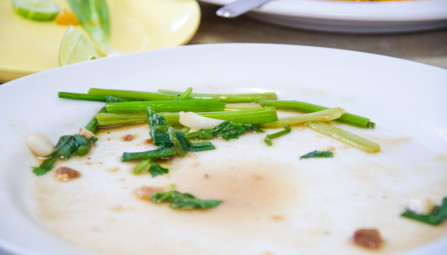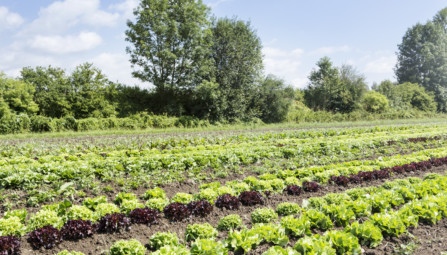NATURE THEME ACTION PLAN
Nature and climate change
The natural environment is generally considered an ally in the battle against climate change as woodland, grassland, wetland and soils can all lock up carbon if managed correctly. But the natural environment is also threatened by the impacts of climate change. Rising temperatures will be higher in the town than that in the surrounding countryside due to the ‘urban heat island’ effect. More intense periods of rain and drought are expected, with impacts on natural habitats and increased competition for water resources to meet the needs of people, business and the environment.
Changes to vegetation and soil will affect many species and in ways that we have not seen before. More research is needed to gauge the way different species are affected, but we can expect more intense competition for food in times of drought and flood and impacts on the life cycle of certain species if they, or their prey, are dependent on particular plants at specific times. Whether climate change could lead to local or regional extinction is yet to be determined, but we know that certain species have not yet recovered from population crashes in the 1970s. Climate change also means that new, non-native and invasive species could colonise the area.

The COVID-19 lockdown highlighted the importance of people having access to greenspace where they live as it became even more vital for the health and wellbeing of people and communities as other activities were subject to restrictions. This underlines the importance of managing greenspace in a way which helps addresses climate challenges whilst improving access for people.
Progress to date
While Reading is predominantly an urban borough, the importance of its green areas and open spaces is increasingly recognised – not just for their own sake, but for the benefits they offer to our health and wellbeing. Examples of this include:
- The adoption of policies in the Local Plan to ensure that green spaces are joined up and that new development delivers a ‘net gain’ for biodiversity
- The launch of the ‘Trees for Reading’ initiative which seeks to increase tree cover in the town
- ‘Rewilding’ trials have been initiated by Reading Borough Council, reducing the frequency of mowing on selected highway verges to benefit wildflowers and wildlife, with initial feedback from the public proving very positive
Priorities on the pathway to net zero for nature and key adaptation issues
There is growing recognition of the role which ‘nature-based solutions’ can play in delivering climate change mitigation, and more information on this can be downloaded from the ReadingCAN website. Key priorities in this respect are:
- Managing existing natural habitats to sequester and store more carbon: by increasing the amount of permanent cover (including but not restricted to tree cover) and managing greenspace differently in the town and, perhaps even more important, increasing the storage of carbon within the soil, the natural environment can make a significant contribution to reducing Reading’s
carbon footprint Managing dead and dying plant material to leave in situ wherever possible or managed to return carbon and minerals to the soil - Ensuring that new development delivers a ‘net gain’ for the environment: as Reading grows we need to ensure that national and local planning policies requiring a ‘net gain’ for biodiversity are observed, so that new and restored habitats can help us mitigate the causes and adapt to the impacts of climate change
- Creating and enhancing wildlife corridors through Reading: by joining up natural and semi-natural habitats we can increase the value of Reading’s greenspaces as carbon stores and sinks, as well as making it easier for people and wildlife to adapt to climate impacts

Increasing vegetation cover will reduce the urban heat island effect and improve air quality. Street trees will provide shade in the town and encourage cycling and walking, while hedgerows will offer shade and some protection from wind.
By increasing permeable surfaces in the town, we can allow water to infiltrate the soils rather than run-off to increase flood risk. Some green spaces may also be able to store water for lengthy periods to mitigate flood risk in the town. The type of planting, the management of top growth and soils, and the management of water all need to change across the town; not just in gardens and green spaces, but also in car parks, road verges and vertical spaces.
Green corridors – along transport routes, waterways as well as in parks and open spaces – provide a route for wildlife to move through the town and colonise different spaces which will improve their resilience as local conditions change. Since we expect higher temperatures and risk of drought, as well as more intense periods of rain, these corridors need to contain areas that are big enough to provide shade and shelter as well as areas of higher ground.
Creating and improving these wildlife corridors will be beneficial to people as well. They will provide shade for people as they move through the town and additional greenery to reduce the urban heat island effect, improve air quality and enhance the townscape.
Gardens are an important resource for nature and higher temperatures, more intense rainfall and periods of drought in the future means that changes are needed in the way we manage our gardens to mitigate the impact of climate change and continue to provide a useful habitat for a range of species.
The green corridors and gardens referred to above are very important for wildlife, but the town needs a coherent approach as well to mitigate the direct impact of high temperatures on human health as well as on biodiversity. Emergency cool areas may be created in hospitals and public buildings, but most buildings could benefit from tree planting to provide shade, and perhaps green walls and roofs reducing internal temperature gains (as well as warming in winter). The nature theme action plan therefore looks at ways to modify the built environment to mitigate the climate change impacts, complementing actions in the water, health and low carbon development themes.
Nature Theme Action Plan: By 2025 the people of Reading will live in a greener town with changes to the management of open spaces and the green links between them that store more carbon as well as giving shade for hot summers, corridors for wildlife and some flood control. New developments will include biodiversity net gain and water management, and there will be exemplar sites showing how to change planting and soil management around buildings to mitigate the impacts of climate change.














